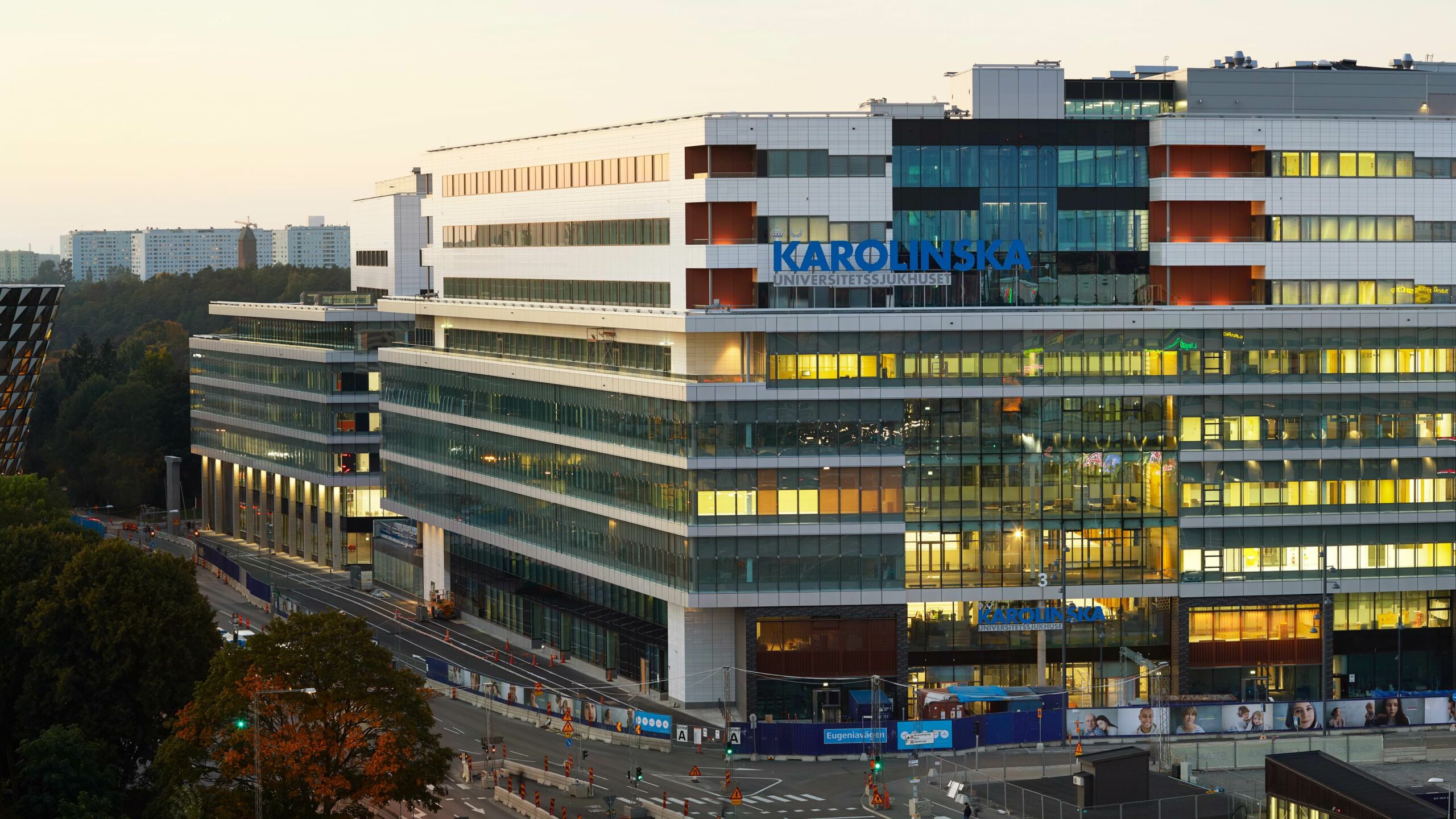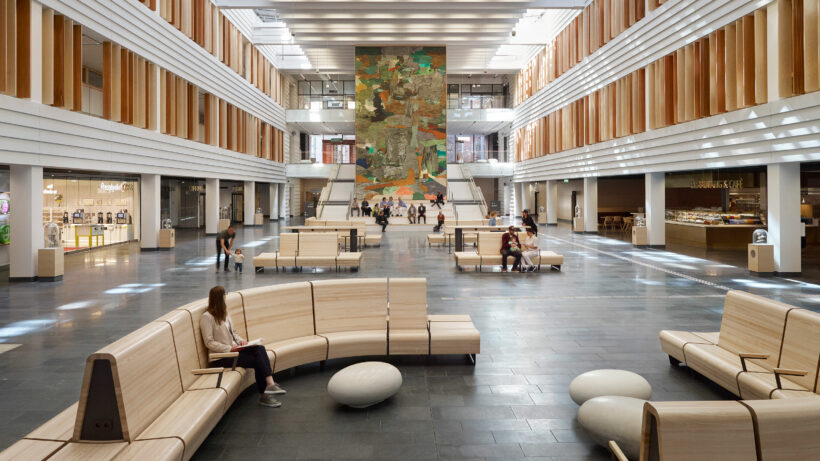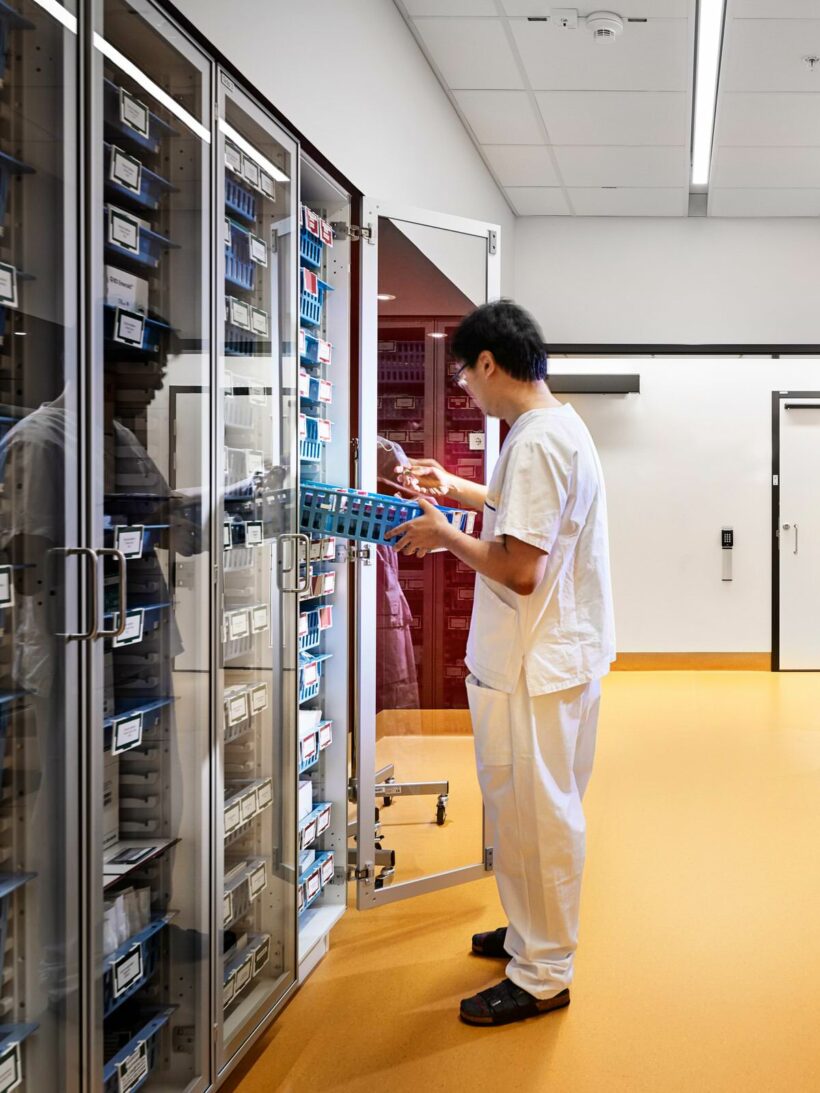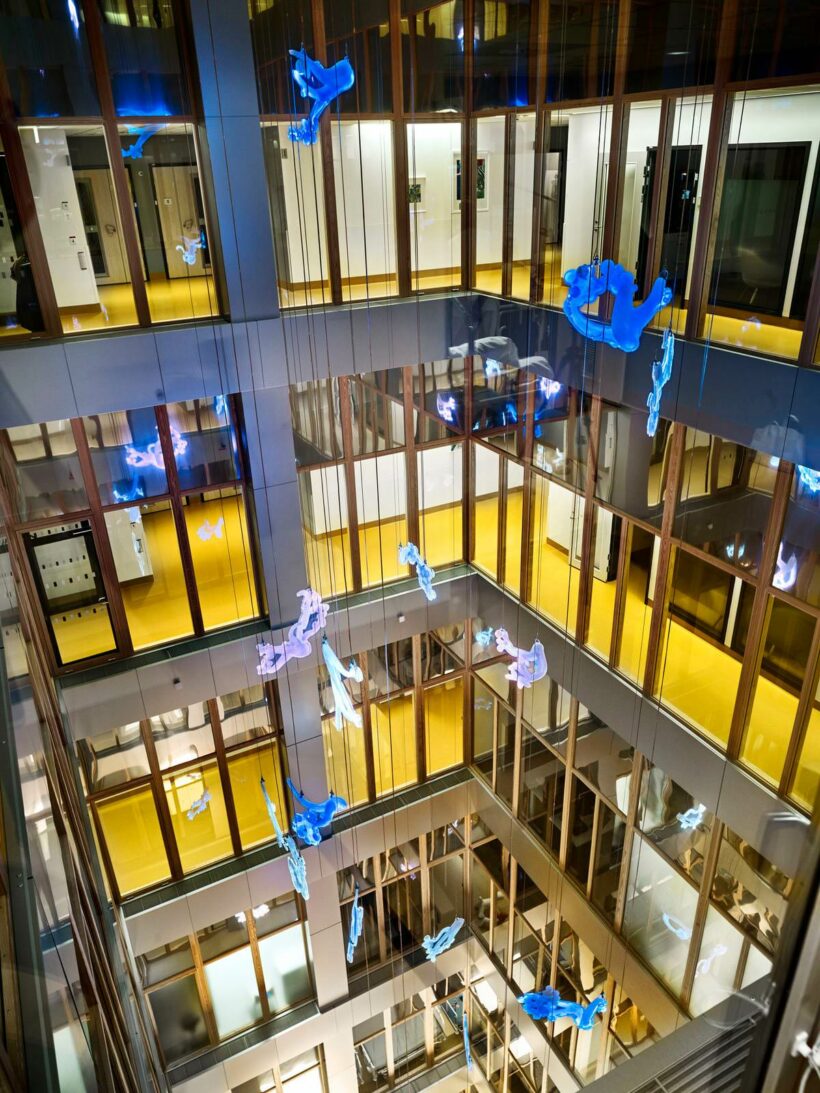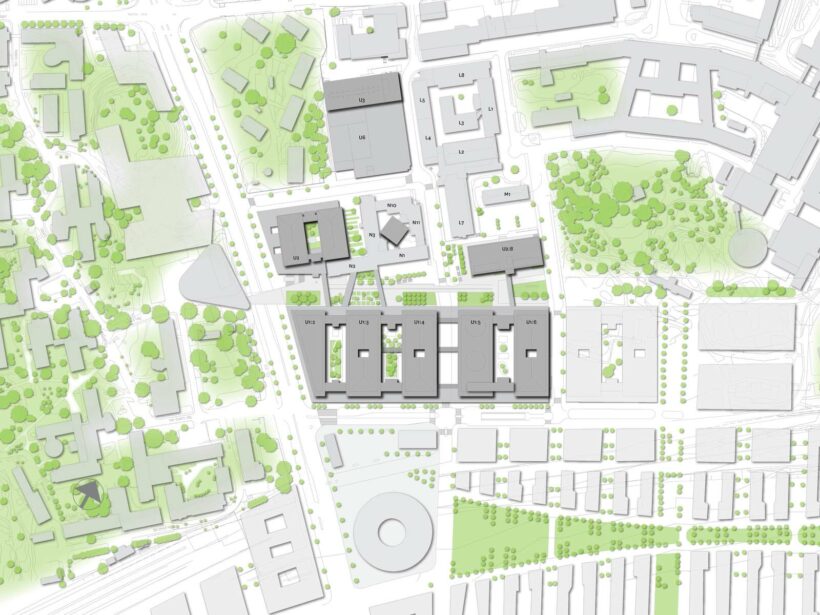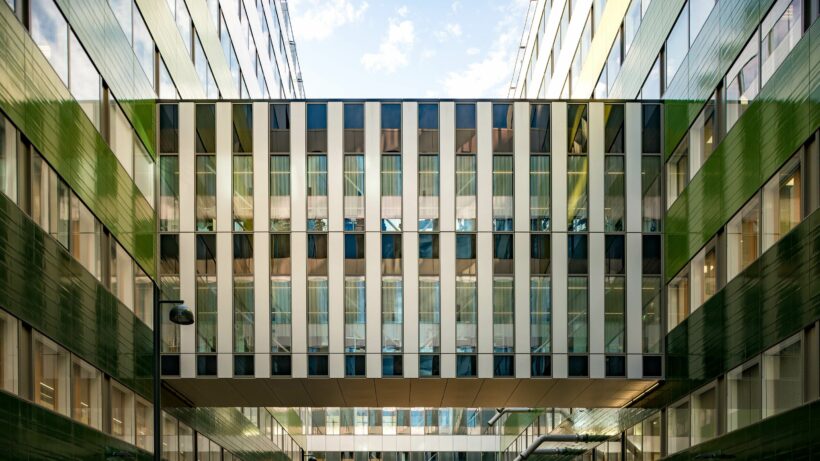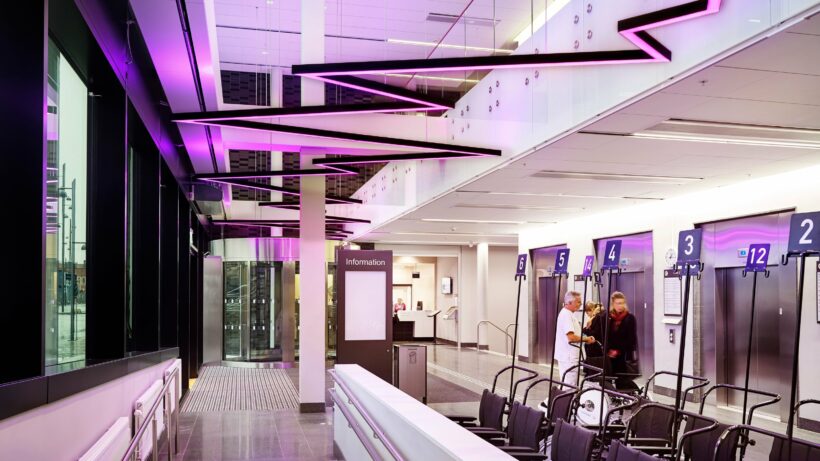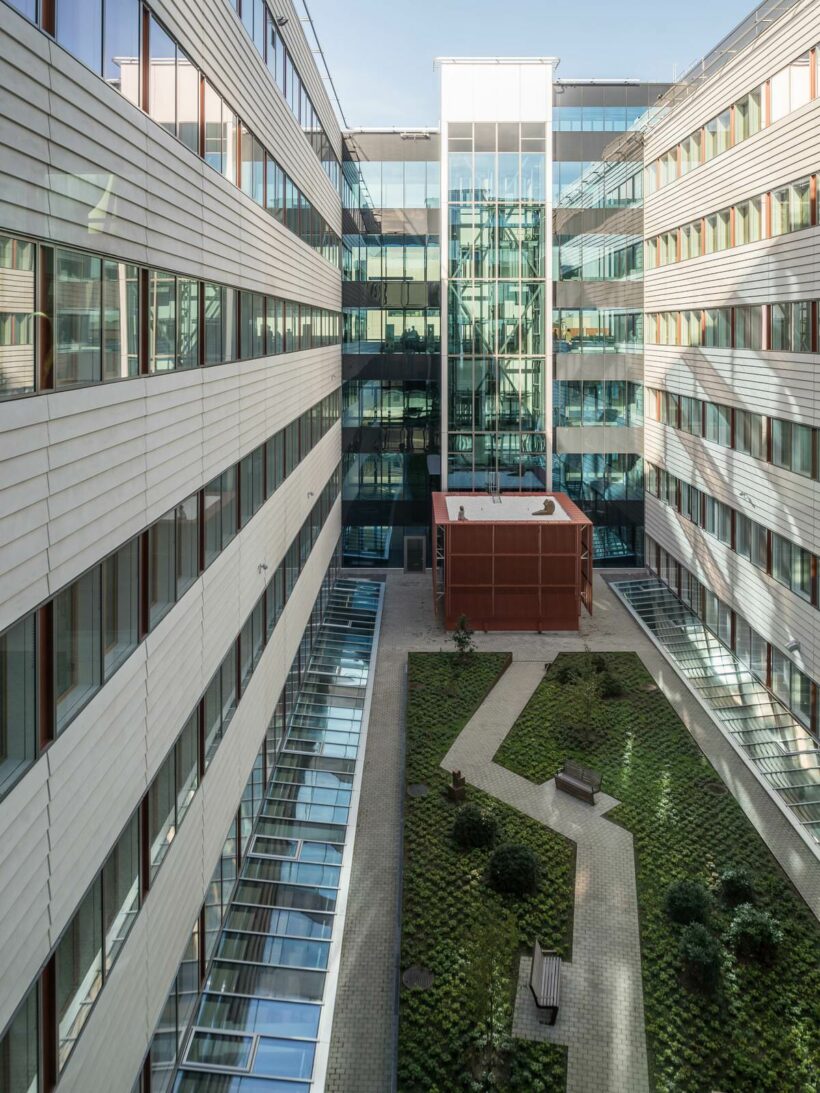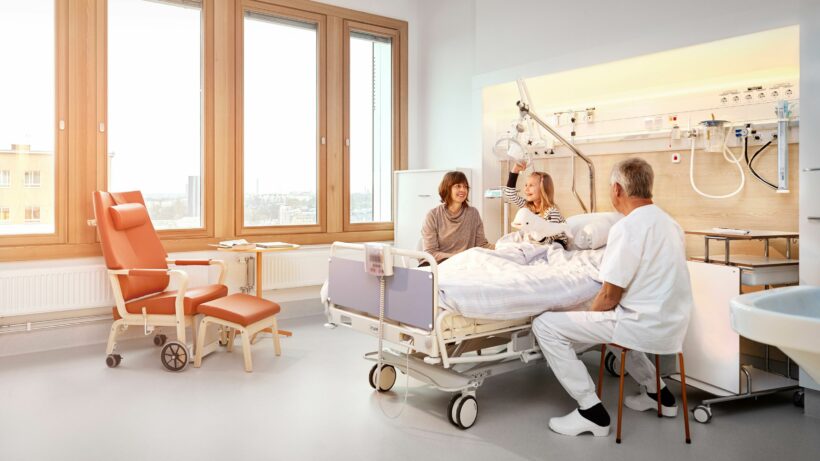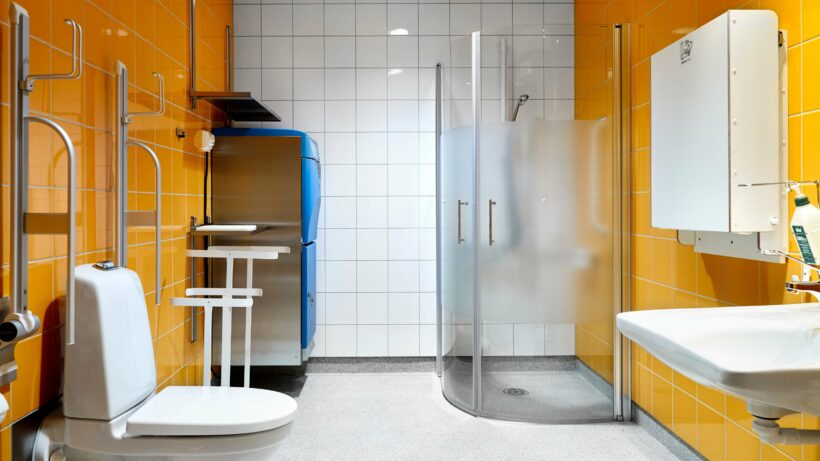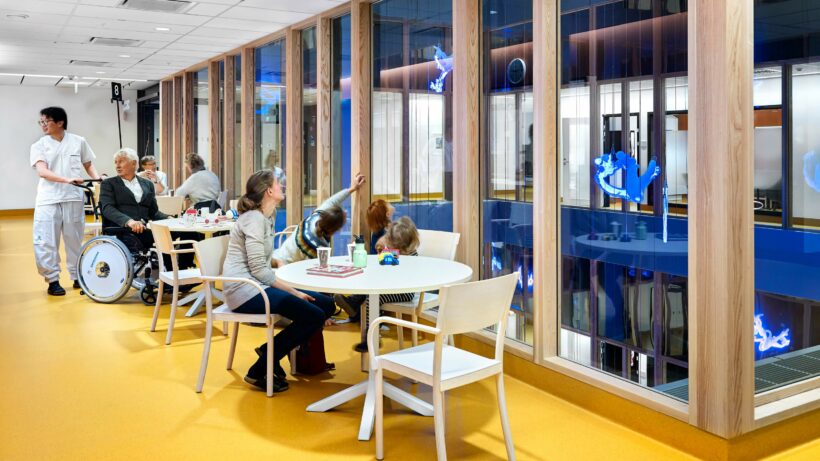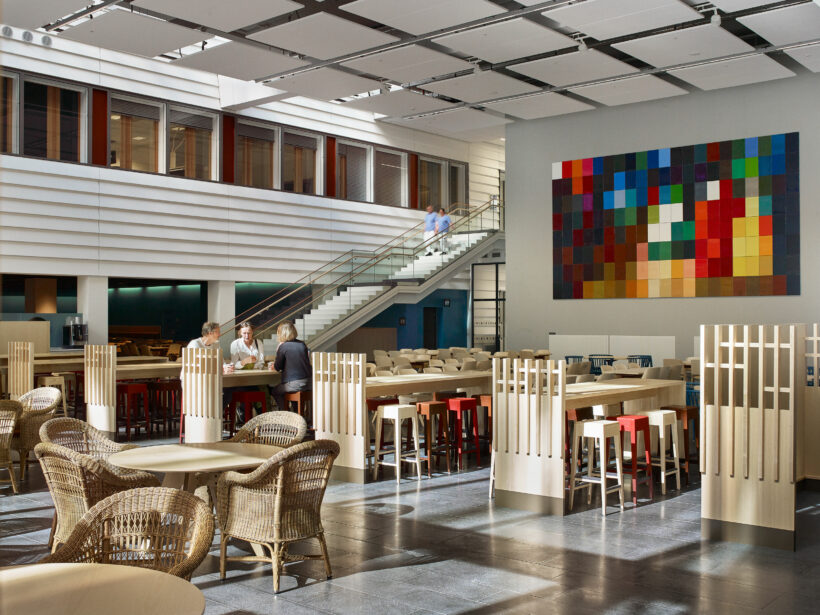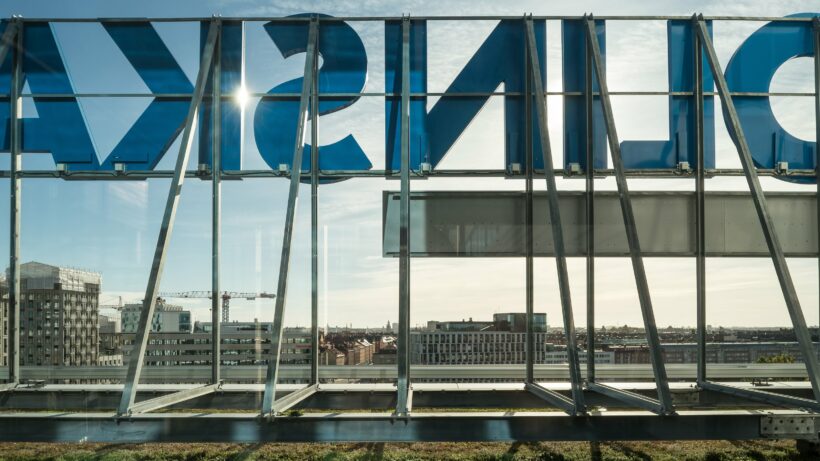Patients have their own en-suite bathroom and an additional bed to accommodate an overnight guest, the support and close proximity of friends and family is crucial to recovery. The light, airy rooms are designed so medical functions do not dominate. Vital technical access points are integrated into the bed-head panel and there is storage space in the support zones within the ward for mobile medical equipment. Strategic sink locations, private hygiene rooms and smart logistical solutions help prevent the spread of infections.
Productive workplaces
Specialist clinicians, who have traditionally worked in isolated clinics, are now part of thematic diagnostic care and treatment units, each staffed by a full range of specialist healthcare professionals. Support functions and equipment are located inside the ward, close to small, decentralised nursing stations. Supplies can be quickly and efficiently moved around the building to and from the bedside using pneumatic tubes and remote-controlled robot carts, which have their own dedicated elevators. These efficiencies mean medical staff are able to spend the maximum time with patients.
